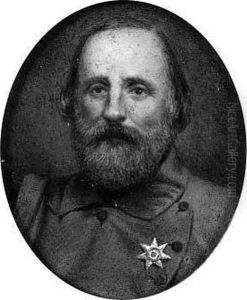Pietro Barabino Paintings
Pietro Barabino was an Italian artist born on September 25, 1839, in Genoa, Italy. He was primarily known for his work as a fresco painter and his contributions to the decoration of several important buildings in Italy during the 19th and early 20th centuries. Barabino's artistic talents were nurtured from a young age, and he studied at the Accademia Ligustica di Belle Arti (Ligurian Academy of Fine Arts) in his hometown, where he honed his skills and gained a foundation in the classical traditions of Italian art.
Barabino's work was characterized by a blend of the neoclassical style, which was popular during his early years, and the Romanticism that started to influence the arts during the mid-19th century. His frescoes are noted for their vivid colors, attention to detail, and often included religious and mythological themes. One of his most notable works is the decoration of the ceiling of the Teatro Carlo Felice in Genoa, which showcased his mastery of large-scale compositions and his ability to work with the architectural elements of a space.
Throughout his career, Barabino received various commissions for religious institutions, which included works for churches and cathedrals. His religious paintings often reflected the spiritual fervor of the period and were imbued with a sense of divine presence and emotional depth. He also participated in the restoration of older frescoes, ensuring the preservation of cultural heritage.
Pietro Barabino was not only a prolific painter but also played a role in the cultural life of Genoa. He was involved in the artistic community and helped foster the growth of art in the region, influencing younger generations of Italian artists. Barabino passed away on November 2, 1920, leaving behind a legacy that is still admired for its contribution to Italian art history. His works continue to be studied and appreciated for their technical skill and historical significance.
